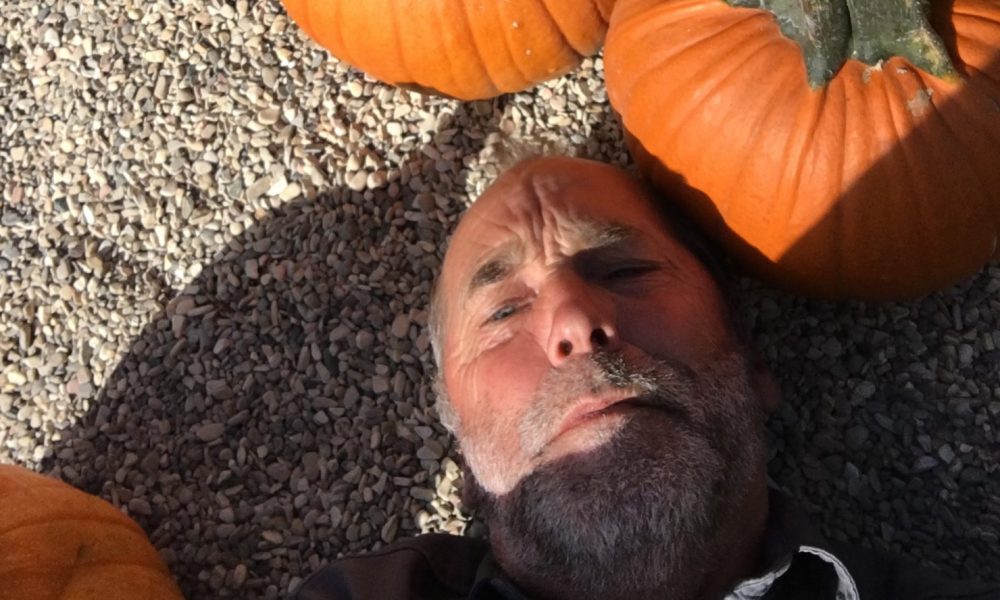

Today we’d like to introduce you to Will Scroggins.
William, please share your story with us. How did you get to where you are today?
I’ve lived in Cambria since 1985. I drove up and down Main Street long before there was a Redwood Gallery. The site was just the old Laundromat, and a small auto parts store. I watched the Redwood Gallery on Main slowly take shape, turn into an amazing display that graced the town. But I only watched from the outside. I didn’t know the man who owned it and did the work.
A few years ago a second gallery, Moonstone Redwood Art Gallery, popped up at the end of my street—right where it ends at Moonstone Beach Drive—in a building that once housed local painter Sally Seago’s gallery.
This location was destined to be different for me, because I pass it each day on foot rather than speeding by in a car. Even that might not have been enough to spark a friendship with Will, though. I think we needed the go-between of Bella.
Bella is Will’s dog. She looks like a cross between a black lab and an Australian shepherd, and is about sixty pounds of pure sweetness. Even my easily-intimidated fifteen-pound dog Ella does not find her intimidating. It got to be a pleasant habit for Ella and me to stop to say hello to Bella and Will.
Will has a nice late-model pickup truck, and a big 4×4 Jeep, and it was clear that his redwood furniture and sculptures brought him a good income, so of course I never imagined that he’d come from much of a hard-scrabble background.
It was after quite a few years of brief daily visits that Will invited me into the gallery and told me there was a story behind his success as an artist. There’s one thing you can always count on with authors: we like a good story. And I’m a great lover of nature, so I especially love a good story that revolves around a tree.
It was Will’s encounter with one singular, huge, ancient, gnarled tree that changed the course of his life. That tree literally changed everything for this man.
“It was one night at that Laundromat gallery,” Will told me, “when I got the phone call. Here’s this guy, a tree feller, who I’d never met but had talked to once previously on the phone. He contacted me because he was being paid to remove a tree that fell at the entrance to an estate on top of a mountain called Mount Madonna in Watsonville, California. Funny thing is, all the redwoods were cut off that mountain in 1906 by lumber companies to rebuild San Francisco after the earthquake. But this specific tree, they drove around it because lumber companies want trees that look like telephone poles for slicing up into lumber.
“This tree looked like Medusa.
“It was lightning strikes that shaped it,” he told me. “Because it was on top of a mountain in a big open meadow it was like a lightning rod begging for lightning to hit it. It was hit so many times—the tree lived a tortured life. Tormented. It seems like redwoods, the more tormented and tortured, the more highly figured and crazy the wood is. Since lumber companies drove around it, it continued to live. All the other trees they cut down. Redwoods grew from those stumps and they’re now 110 years old but they’re not 600 years old and twisted like this tree.
Will began pointing around the room. “Everything outside in the parking lot, that bench that you’re sitting on, this bench I’m sitting on… this bench, that bench, that mushroom, my desk, this bench, that chair, this chair, the big mushroom, the piece on the wall, the big piece in the corner, almost everything in my shop, 90% of the wood I own is still from that tree.”
I couldn’t help commenting that it must have been one large tree.
“Huge,” Will says. “And my garage—it’s got some huge sculptures in there I’m working on from that tree. Because it was hit by lightning so many times, every time lightning would hit the tree it would kill a section of it, and then the surrounding living section, instead of growing the way it’s supposed to grow, it’s now growing different directions trying to encase and cover the dead part of the tree. It takes decades to do that. So every piece you cut into, there was rot in the center, but what solid fiber was left, the grain was just twisted and tripping over itself and the color variations of red were unbelievable. From bright red to dark, deep browns. That was death, the dark part. As I’ve worked the wood I’ve learned to not rape it and keep as much natural detail as possible—whether it’s because of the rot or insects, keep the natural detail—because that’s what makes it unique and one of a kind.
“Everything in nature is unique. If you want something in your house no one in the world has, go out in the woods and bring something home, because everything in nature is one of a kind, I believe. You can tell everything in here is definitely one of a kind. I’ve never tried to make anything twice.”
But this is more than just a story of man meets tree. This is a something of a rags to riches story. Will’s life had not been nearly as smooth as I had imagined.
“I was working in Ohio in a factory where I thought I would live and die,” Will said, “like everyone else in this factory had done for decades. Well, in the 80’s recession that factory laid me off. I was at the bottom of the list and the people at the bottom got laid off first.
“I moved to where my step-sister lived in Myrtle Beach, South Carolina. I was twenty-five years old and I got a job telemarketing. One of the girls working there told me her husband was a framer and there was a huge construction boom going on in Myrtle Beach at the time. She introduced me to her husband. He said he could get me a job as a carpenter’s helper building these condos down on the beach. I went to the store and I bought a Black and Decker skill saw and a tool belt. When I showed up on this job I had this green plastic skill saw and shiny, cheesy tools.
“I took my tool pouch and my tools and I dragged them through the gravel to try to rough them up, make them look used. The very first day on the job I slammed my thumb twice with a hammer in a period of thirty minutes. I dropped my tool belt and told myself, ‘This is not for me.’
“I almost ended it right there and walked away, but I had bills so I didn’t. “I stayed with that framing job for a couple years before I had a falling out with the subcontractor. Then I went to work for the general contractor of the project that same day. I started trimming and building cabinets, hanging doors. I worked my way up to a foreman overseeing other people doing the same work.
“Then I met a woman—my third wife, as it turned out. I moved to North Carolina where her family was from. “It was a very low income, economically depressed area. I’ve never seen so many grown men milling around the streets doing nothing. There were drink houses and gambling but no work.
“These were all brick houses, two and a half stories. One day my mother-in-law told me her gutters were filling up with leaves and clogging. So I went to the store and found these 3-foot-long wire-hinged panels that you mount to the gutters. They keep leaves from getting in. I went door to door through her neighborhood—which was a brand new development—with flyers that said, you know, ‘Keep your gutters clean,’ blah, blah, blah. I got several jobs and I made good money from them.
“At one of the houses the lady said, ‘Do you do any kind of carpentry?’ This development was brand new and the houses were complete but the basements had a fireplace with plumbing and electrical but the walls were all cinder block. She wanted her basement finished off. So I got the job doing that.
“Long story short, I was in these two cul de sacs for three years finishing off people’s basements, building doll houses, swing sets, whatever for these people. “After I’d done that for several years, my wife decided we would divorce and that she was moving to LA with my two-year-old son, Josh.
“First I went to court and said, ‘Hey, you’re effectively removing custody if you move to California,’ so she had to stay. Then the second time she wanted to go I decided it’s a better life for her so it’s a better life for my son. So I didn’t fight it. I let her move.
“I owned the house—I’d bought her out when we got divorced—so I had my son’s room. Before they moved away he would come every weekend, and I wanted it to feel like home, so I’d kept it the same. And even though he was just a toddler, you know, couldn’t really talk yet, I was so in love with him that when they moved he was all I could think about. I have a hard time talking about it even now.
“I would go in his room and hug his stuffed animals on his bed and cry myself to sleep. After doing that for so long, it was driving me crazy, and I thought ‘I’ve got to do something.’
“I contacted my ex-wife’s brother-in-law in Los Angeles to see if he could give me a line on some work out there, because I wanted to be near Josh. I got a cheap plane ticket, round trip. Flew out to see what the potential was. The ex-brother-in-law, Jean Paul, he’s a printer. Big company. He said they were going to be doing a lot of work on his printing company’s property, and there would be work for me.
“I flew back and got all my tools loaded up in my friend’s truck along with his tools and we went together as a team. Well, the work didn’t pan out. We ended up working at Jean Paul’s house for maybe three months and he paid us $500 a week cash. Really my ex-brother-in-law was trying to get me back together with my ex-wife so he could get her out of his house and get back to his life. I didn’t want to get back together with her but she couldn’t make it on her own working for him. Not on what she was making. So I moved in with her. But not as a couple.
“When we had the ‘94 Northridge earthquake she moved back to North Carolina with Josh. She moved back because she was scared.
“Before she flew home, I made a desperate attempt to stay with Josh by asking her to marry me again. I said ‘It’s not because I’m in love with you, but it’s because I want Josh to have his parents.’ And her response was… she was crying, saying, ‘I don’t… you don’t make me… you know… I don’t love you.’ I said, ‘It’s not about me, it’s not about you, I just told you it’s about Josh!’
“Anyway, it didn’t work. She moved back.
“My neighbor across the street, one of his good friends from when they were teenagers working at Tower Records together was now an art director. Art directors hire set shops to build their sets. Well, he introduced me to a set shop called Cinnabar California. It was the oldest independent set shop in Los Angeles.
“They started me out at $13 an hour, which was a lot less than I wanted. But this was about seventeen, eighteen years ago, so it was a pretty decent wage by most considerations back then. Well… this was an independent shop, but union guys doing what I was doing, just starting out, earned like $24 an hour. But I got my foot in the door.
“It’s what I wanted, just a chance to prove myself.
“One of the first jobs, we did some Styrofoam modifications to this trailer to make it look like a Twinkie sponge cake. In reality the trailer was really a camper on the inside. Then we hauled it out somewhere for a commercial. It was shot in a trailer park in the woods. And they’ve got a live Grizzly bear there. The Grizzly bear, he’s supposed to see this trailer, but what he really sees is a massive Twinkie and he wants the creamy filling on the inside.
“We had to do some breakaway panels with claw marks, like he clawed to get in there. The camera shows inside, and at the dining table this family is having lunch and they’re freaking out. The bear’s up on this stump, you know he’s looking for the creamy filling.
“It was when we started doing the trailer that I realized… none of my construction knowledge from the past had anything to do with reshaping this trailer other than the tools I was using. You even had to learn how to make a wall all over again, because you don’t make walls for sets like you do for a house—totally different construction and similar but different materials. Everything only has to last and stay together long enough to get it on film. There are no inspectors, you can build it any way you want. We built some massive stuff.
“We did Godzilla the movie, all the miniature buildings, ships and stuff because Godzilla was just a man in a suit so everything had to appear smaller. These buildings we would make, they were supposed to be brick buildings. We would use plaster of Paris, baking soda, flour, it was a crazy mixture using sticks of balsa wood inside to hold it all together because it was so fragile. When Godzilla hits things they have to explode. I hand made all the fire escapes and steps and everything, mailboxes, telephone booths, everything was made miniature.
“We did this thing for the Atlanta Olympics. It’s a man standing with his arms spread out, his head looking straight ahead. We had scaffolding set up and we’d start dropping water on the center of his head. It went from two and a half drops a second to a garden hose stream, to two four-foot sheets, to two 55-gallon drums, lying on their side, pivoting, dumping water. So it started with those drops hitting and splattering and ended totally engulfed in water.
“After they finally got done with that, it started again with fire. But we used a dummy made out of plaster with the same clothes, in the same position, with a flex metal pipe going around his body under the clothes. There was gas piped through it. The fire would start out slow until the whole plaster guy is engulfed in flames.
“Overlaid the two films, water and the fire together and it was played at the Atlanta Olympics.
“It was just some of the craziest stuff, learning, making props.
“I worked for Cinnabar for a decade.
“I felt like I had moved up as far as I could go from just a know-nothing carpenter to a lead man handling multi-million dollar projects with my own crew of people. Go here, go there, all over the U.S., setting up film, doing permanent installations for museums, interacting with the public, doing shows for different companies.
“I learned the delicacy of tools and building tiny, miniature stuff. It was like boot camp for life. I thought ‘If I can make it in this industry, I can make it anywhere.’ I had the confidence to tell anyone, ‘I can build whatever you can imagine.’
“So I was making $20 an hour and the controller came out of her office and said, ‘Will, we’re gonna give you a $2-an-hour raise.’ That’s great, that’s awesome. Except I think it was pre-emptive. All the staff, management, had already taken a cut in pay, so I thought it was weird they were giving me a raise.
“When they took us into the office about that 10% pay cut it just happened to be that $2 they gave me. I think that was the reason: so they wouldn’t be cutting into my actual $20.
“At first I didn’t think it was that bad. I thought since they’d given me that raise it wouldn’t be a hardship. But then I thought, ‘I’m 45 years old. I have no life because I’m either working for Cinnabar all the time or I’m on the freeway trying to get home every night and I’ve got a check. A check is not life.’ I thought, ‘Life’s passing me by and I’m not going anywhere.’
“So I decided to suck it up. I knew somebody up here in Cambria who offered me employment. I knew I didn’t want to remodel houses but that would be my foot in the door to living somewhere I would like to live.
“Before that there was nowhere to work in Cambria. I couldn’t afford a mortgage or the rent on a place, and I wanted more than that out of life so I never thought about coming here until all this happened. This guy Dan lived here, he was semi-successful and needed help. I had a construction background so I went for it.
“I gave Cinnabar two weeks’ notice. I did the right thing. I left, came up here, went to work for Dan for a year. But his work ethics and my work ethics were a little bit different and I went out on my own. Started out doing construction for about a year.
“I lived under a guy’s house here in town, in an apartment and I used his space under his second floor deck to make myself a little shop, pallets on the floor and plywood on top of the pallets. His backyard was full of mushrooms, benches, birdhouses. That’s when I really started making things on my own. It wasn’t until I got the tree that I started doing the natural freeform thing.
“Then I started working for a guy named Paul, on a property north of Ragged Point—forty acres on top of the bluffs overlooking the ocean. [Note: check legal. Change name?] There were three buildings. One building was a very old barn on the edge of the cliffs and that building I turned into my woodworking shop. There was the main house—I worked on the house for a year prior to moving onto the property. We had a verbal agreement that I’d live in the third building, a garage with a caretaker’s apartment in the back. We had a verbal agreement about the work and the pay, too. One month into this agreement things changed. He protested that he’d never said some of those things. In the end I had to take legal action to get what I was promised.
“One day I heard him upstairs. He always had parties and people would be up on the deck partying. I never went up there to be part of that because I didn’t want those people down in my space. I wanted to be left alone to do what I was doing. I heard him say to someone, ‘Will makes some pretty cool stuff but he’ll never go anywhere because he doesn’t know how to market himself.’
There have been lots of comments over time, before I started my galleries… ‘Oh he’s just a carpenter, he can’t run a business.’ It was things like that that fueled me, that pushed me to go the extra mile, to try to make it happen. Not to mention I’d started over so many times in my life: three marriages, moving all over the country, never settling down, always starting over, starting over, never having anything.
“I decided that it was time for me to stand on my own two feet as a man and make a life for myself, without asking for help, without borrowing anything from anyone, just taking what I had and trying to make something out of it. That’s when I rented the Laundromat.
“I had so little material and product to display that people would pull up out front in their car and look back there and drive on. One day I decided I was going to build a fence, build a wall so people couldn’t pull up to see what was happening. If they really want to see what’s happening they were gonna have to come in. Because of my limited wood source I started off with a little tiny fence. It was old grape stakes. To make them go further I split them in half and made them thinner so I had more fence. As time went on I’d get more wood, I’d make more fence. I’d get a garage door and paint it and make a wall or whatever.
“That first year I’d do whatever I could to make a sale. I’d stay open all the time late at night with the lights on, barely making the bills. I didn’t have money to be frivolous with; I didn’t go out to eat. Every penny went to the bills.
“I was totally focused on success at this point. The things in my life that were not associated with success had to be dropped and forgotten. So there was no TV, no girlfriend, no friends, no sports. It was all about the work. “I wrote a check to my landlord one month, maybe seven months into my venture. He called me up and said, ‘That checked bounced from insufficient funds and I’m going to come by tomorrow to see you.’ He came by with a 3 day pay or quit notice. He said he and his partner felt like I wasn’t going to be able to get out of this hole, it would just get deeper and they wanted to nip it in the bud.
“That was on a Thursday. Banks were closed on Monday for a holiday. I had to have that money in the bank by Tuesday morning. I had nowhere to get any money. I mean nowhere, no one, no credit cards; I had to call Paul, the adversary I’d sued to start my business. I had to ask him for help to save my business. He came, he took a bunch of my merchandise and got it for a lot less than what I was trying to sell it for. But I needed it to keep myself afloat.
“On the way to the bank he made a very direct and cutting comment about how he felt I’d treated him. I said nothing. I just kept my mouth shut the rest of the way to the bank, and the deal went through.
“It was about another year before I got the call about the tree. I had to suck it up for another year. But I kept making the rent. And the rent increased from $900 to $1200 because when Rick’s Auto Parts left I knew I had to get his space. It could not be rented to just anyone because some dress shop or whatever… they’d run me out of business. They wouldn’t put up with my noise and dust and stuff. So I rented it even though I didn’t have much.
“Bills come due so you have to work harder. It’s like when I rented this place. I couldn’t afford the first month’s rent but I knew if I had the bills I’d make it happen. Giving stuff away cheaper than you wanted to, that’s what you do when the bills are due.
“I was living in my shop. I built a platform in my workshop for a single mattress. It was forty by eighty-four inches and six feet above the floor. Under my bed was a closet/tool cabinet. The building had no heat, the roof leaked. I only had a utility sink to bathe in. I lived that way for six and a half years.
“I had to starve. I literally starved. The Hispanic family across the street, they’d lived there for 20 years in a rental house. They had parties every weekend and they had big barbecues. They’d always send their sons over with a big plate of food when I needed it. That’s when I started talking to God. I had nowhere else to turn so I talked to God.
“That couple probably owns more of my creations than anyone in the world because I’m not a taker. I wanted to give. They have tables, chairs, chests, mushrooms and she, Maria, still likes to receive things from me.”
Now. This is where we get to the tree part of Will’s story—when he crossed paths with the tree that changed everything.
“When I first started,” he said, “I’d look on the beaches because I didn’t know where to get redwood. I didn’t know anybody who had redwood. And like everyone else I thought, “It’s all protected, it can’t be touched.” It turns out coastal redwoods, there’s probably more on private property than there are in the parks.
“Then I met a guy named Mark, up in Lucia. He owns 160 acres on the East side of the road. It’s a little mountain, it’s all redwoods, and it’s been in the family for over a hundred years. That’s where Hearst’s property ended, right there. A thousand acres but it’s been broken down over the years, divided up. Mark was selling me burnt, rotten redwood and bark, and I was making things out of it. People were like, ‘Wow! This was a burnt piece of wood?’
“One day a guy came in and he said he was 85 years old. Well, this old man, he said, ‘I’ve got 88 acres up in Big Sur. I want you to come up and see it.’ So I made an appointment and I went up. There’s the main driveway, gated, goes up to the house, and then there’s a little gated blacktop that goes down to the bottom of a valley. So he took me down the back, into the valley of redwoods with water running through it. He said, ‘Anything on the ground, anything in the water, anything burnt is fair game, because if you don’t pick it up it’s gonna clog up my creek eventually.’
“Those little pieces, twisted knobs and stuff would inspire me to make things.
“Well, I got a phone call from a guy, Sean is his name. He said, ‘I’m coming down the coast with a pick-up truck load of this stuff.’ I was all excited. He showed up in the truck and he had four slabs and some free-form pieces. My desktop there is one of those 4 slabs.
“I had $500 and he wanted $1,500 for the load and I was just salivating looking at this wood and I wanted it, but because I only had $500 I knew I wasn’t going to get it. But he said ‘You’ll owe me a thousand bucks.’ Then he said, ‘I’m going back up there and I’m not hauling this wood back up with me.’ So I was just elated. I was stoked. I just could not wait to get working on those pieces.
“I contacted a guy named Garrett and told him my situation. Well, Garrett volunteered to drive me up there with his one-ton truck and a sixteen-foot hydraulic dump trailer. It had to have cost him at least a hundred bucks in diesel fuel to take me up there and back, plus his time, and a friend of his went too, so another helping hand.
“We got up there and I met Frank, the property owner. Frank doesn’t make his money selling redwood, but his 6,000-acre ranch is covered in redwood stumps from trees cut down in 1906. And there are 110-year-old fairy rings around every one of those stumps.
“Sean was burning a lot of it to get rid of it. Actually what he was doing, he had taken a backhoe and was digging around this stump trying to get it out of the ground. The roots were just everywhere and massive. So he pulled all the bark, all the smaller pieces of wood up to the base of that tree and set it afire with gasoline to try to burn off as many roots as he could. To get it out. While he was doing that, I was across the street with Garrett and his friend, loading everything we could get into that trailer.
“He charged me $500 for the trailer load.
“When I went back up the second time he said, ‘Look Will, I don’t know anyone else who’s gonna buy this. Why don’t you buy it all? I want $5000 for it.’
“I gave him the $500 I had, and he said, ‘You can pay me in nine payments, $500 each.’
“There were 27 different trips. The crane operator, he was on the clock from the minute he left the yard in Watsonville until he got done loading. So the cost of him, and the cost of the truck trailer driver and a helper, it tallied about $2500 each trip.”
At this point I had to stop him and ask how he was getting all this money. “Were you getting it from making and selling some of the wood from the trip before? How were you affording each of these trips?”
Will said, “Yeah. Just by what I would make and sell. I had no other income, I had no credit, I had no family. It was just me, my time and my tools.”
I asked Will, “Do you know how old this tree was? Do you have a guess at least?” “They had an arborist come up and because the center was gone they guesstimated 600 years, which isn’t all that old for a redwood.”
“Wow! Sounds old to me, but anyway, go ahead.”
“It was eleven feet in diameter. The top had been blown out, Frank told me, at least once in his lifetime. And Frank said that tree, in his 75 years, always looked exactly the same. Big, twisted, gnarled. In a big open meadow, right in the center, was this tree on top of a mountain. He said they always referred to that area as Lone Tree Field. There’s a picture of him on my website standing in front of that fallen tree. The tree is lying on its side and it’s still twice as tall as Frank.
“Well, when I got up there he was still moving some of it and he was digging the stump, which was humungous, out of the ground. When he got it out, it fell apart into three huge pieces. Two of those pieces are in my parking lot. I’ve had friends come over, come to visit from out of town, out of state, whatever, and I’ve put them to work, chiseling bark off of some of my pieces ‘cause the bark didn’t want to come off. It was a pain in the butt.
“And I thought—my mind set was—every piece of wood should be slabs: tables, desktops, whatever. I’m thinking slabs. So every piece of that tree that I’d see was full of rot, I just tossed it behind the building. I couldn’t get any slabs out of it.
“About four years ago, I start pulling them out. I start digging the rot out of them. They started to be the most beautiful sculptures I’ve ever seen. Nature—through rot, fire, and insects—sculpted them.
“As soon as I started making things from this tree, the couple who did my stained glass… it’s interesting how I met them. When I first opened they came by. They’re from L.A. We talked and Tom was interested in what I was doing. Betty wanted to go somewhere and do something, and Tom said he wanted to stay. I’m thinking ‘Lady don’t leave your husband here. I can’t entertain him. I’m not babysitting your husband, I got work to do.’ I didn’t say that but that’s what I thought. But that was the beginning of our friendship.
One day when Tom and Betty came into town they stopped by the gallery over on Main Street. Betty said, ‘You ought to do a coffee table book, Will.’ She said, ‘What would you call it? I know what you could call it. Remember what you told me the last time I was here and I asked, “What are you going to turn that in to?” and you said “It already is what it’s gonna be”?
“Ah,” I said. “That’s a great title.”
“In reality it’s like that piece there. It already was that, I just removed rot and bark and soft stuff. I didn’t alter it or change it. The fire sculpted that shape you can see. I didn’t do anything but drag the charcoal off to show the wood.
“Basically what I do with a sculpture is, I just remove everything that isn’t hard, trying not to change the shape of the hard fiber beneath the rot. When I get everything that isn’t hard dragged away I soften up what’s left and there I have a unique, one-of-a-kind sculpture. Whether it’s to look at or utilitarian like that bench there. That bench top is part of this stump.
“That stump was eight feet tall, six to eight feet in diameter, hollow, charcoal inside and out, attached to the earth by five fingers you could crawl between and up inside. I severed those five fingers, craned it onto a trailer, and when it got to my shop and they unloaded it, it hit the asphalt with a thud—you could feel the vibrations in your feet. And a piece popped off that stump. I was upset at first because it ruined a perfect patina. Now there was a strip where that popped off. After looking at it for just a couple minutes, I calmed down and I thought, ‘It’s going to be a beautiful sculpture, on its own.’ And it is, in a way. A utilitarian sculpture.”
Just so you know how much better things got for him after his encounter with this tree, Will told me this story of a day he had a year or two back.
“I was in the gallery with clients talking about a custom creation when the phone rang. It was a man from Canada. He’d been to my studio on Main St. He wanted to know if I still had a piece—a hollow curly redwood trunk. We went to the gallery and to make a long story short, he spent $55,500.00 that day. I tried to write it up and my head was spinning and it all seemed so surreal. I’m still holding some $40,000 worth of his purchases and he should be here this month to pick them up. I’m hoping I have enough new outrageous creations that he’ll be tempted to buy one or more of them.”
So that’s why I called this a rags to riches story. I’m not saying Will is rich, but to go from living on a little pallet in your unheated shop to a $55,000 day, well… that’s quite a journey.
Will has told me on a number of occasions that he’s always lived his life by the Pay It Forward philosophy. And maybe that’s part of the reason why we get along so well.
“I would give small mushrooms to hard-nosed little old ladies or a piece of wood to a young person who seemed overly interested in my vocation. I call it being selfish because it made me feel good. I’ve brought a few people to happy tears and I’ve had a few of my customers bring me to tears over the years. When I would give something away, the receiver would always be amazed and ask why. I would always respond that it’s good karma to Pay It Forward and it always comes back somewhere and some time unknown.”
I should mention at this point that Will once brought a redwood mushroom to my door and asked me how I felt about adoption. I thought he had a cat or dog he was bringing to me (I already have one of each, adopted), but he was giving me the mushroom for my yard. He knew I’d wanted one for a long time. Meanwhile Bella was wagging from the Jeep. I still have that beautiful mushroom in my back yard.
And of course this story has to end with Will’s unique perspective on wood, and what he’s learned from working with it all these years.
“After working with lumber all my life I’ve never seen a pretty two-by-four. You can give me a unit of two-by-fours and I will not create anything awesome. But by taking the shapes nature’s given me, each time I come up with a new idea. It’s actually just the shape that nature’s provided me.”
“It already is what it’s gonna be,” I said.
“Right. It already is what it’s gonna be.”
As Ella and I walk home, I can’t help wondering if this title applies to more than just redwoods. I think about the times in Will’s life, in my life, when we were figuratively struck by lightning. The more we were tortured and tormented, the more highly figured we became.
Maybe when Will was working in that factory in Ohio, or living on a slab in his unheated studio, maybe, like his creations, he already was what he was going to be.
Please tell us about Moonstone Redwood.
I take redwood that is burnt rotten and turn it into beautiful rustic modern Art every piece in my gallery is a unique one-of-a-kind piece due to nature and the tortured life the trees have lead. I take him to remove everything from a piece of redwood that is not hard. With what is left after removing the Decay and charcoal I soften up the natural shape and if I can turn it into something utilitarian I do if not it becomes a sculpture. Everything in nature is unique nature does not mass produce anything. That is how I can say with confidence that all of my pieces are one-of-a-kind and unique
Do you look back particularly fondly on any memories from childhood?
When my dad would take on extra work to support the family he would take me with him as his little helper and let little did I know I was learning for what would be my future in woodworking and Metalcraft.
Contact Info:
- Website: MoonstoneRedwood.com
- Phone: 8053951148
- Email: [email protected]
- Facebook: Moonstone redwood
- Twitter: Moonstone Redwood
- Yelp: Moonstone Redwood
- Other: Moonstone Redwood
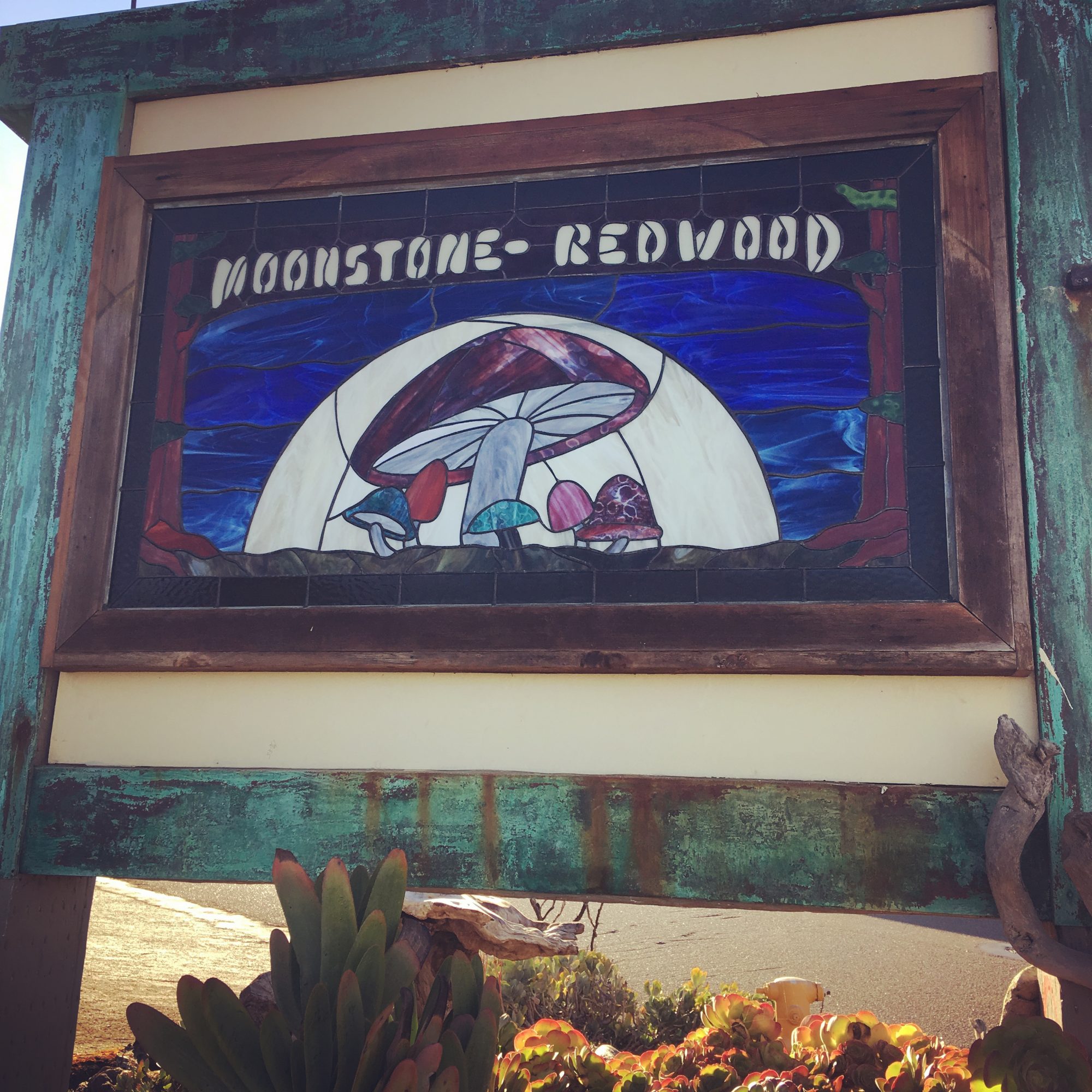
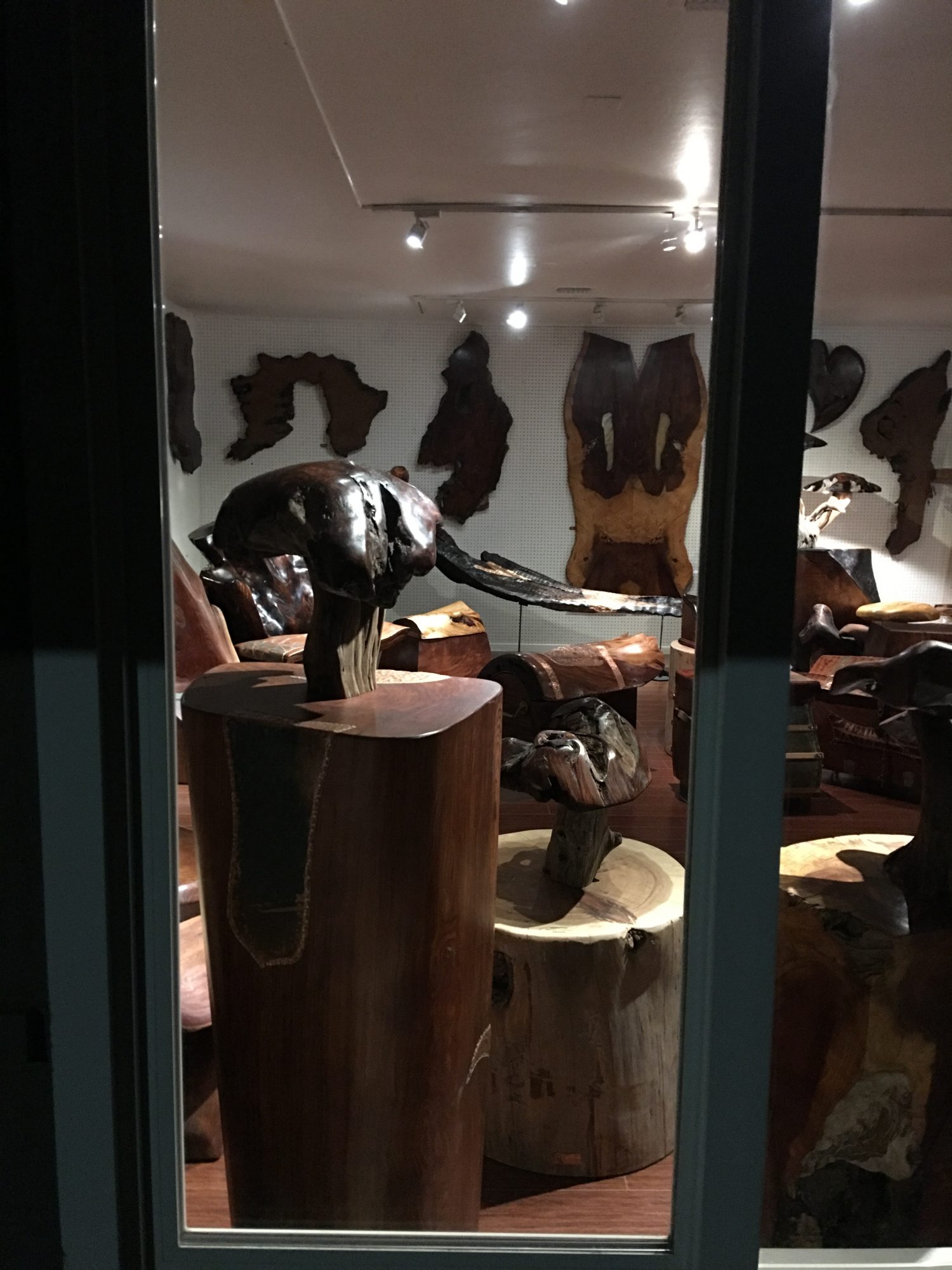
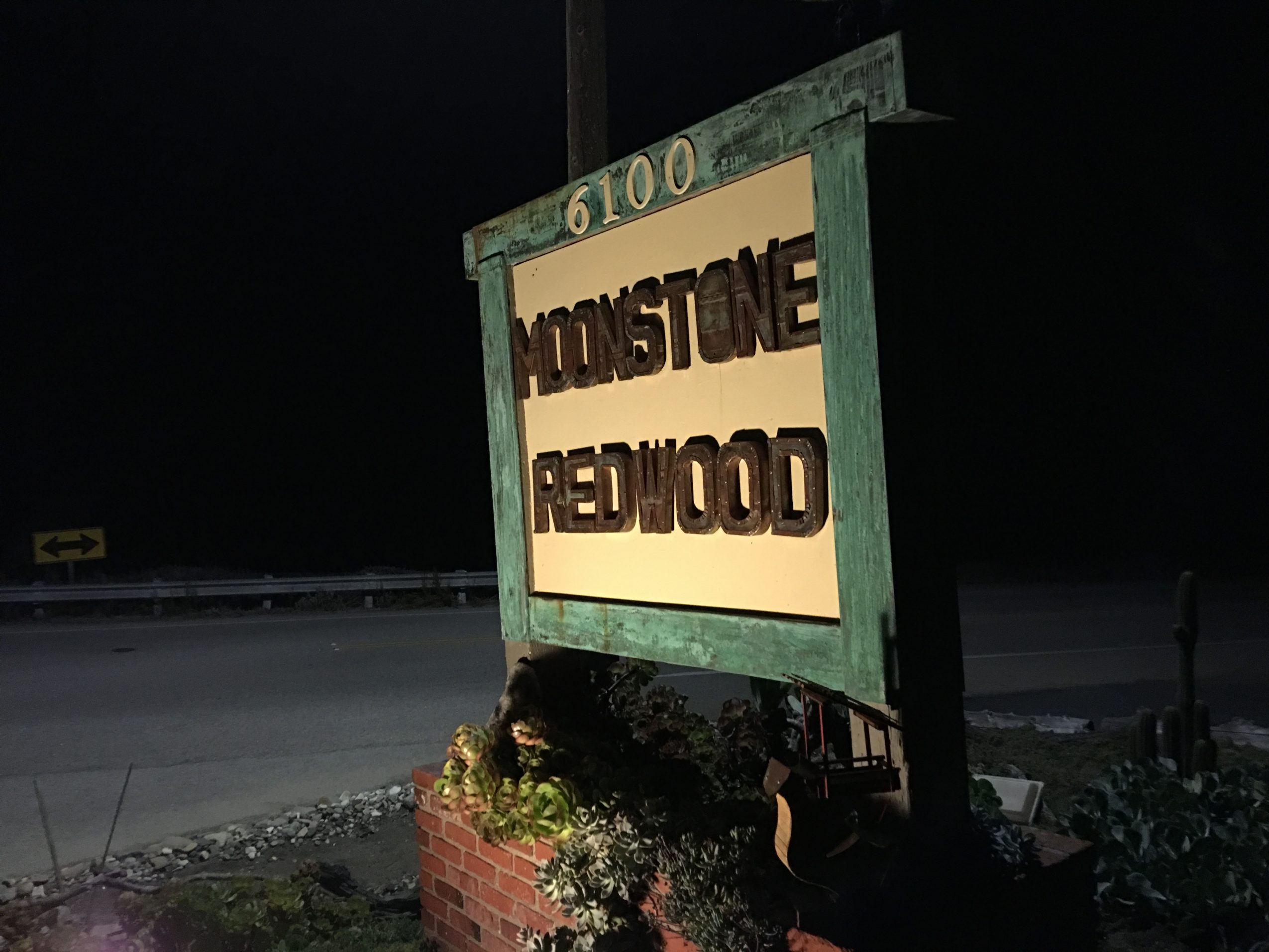
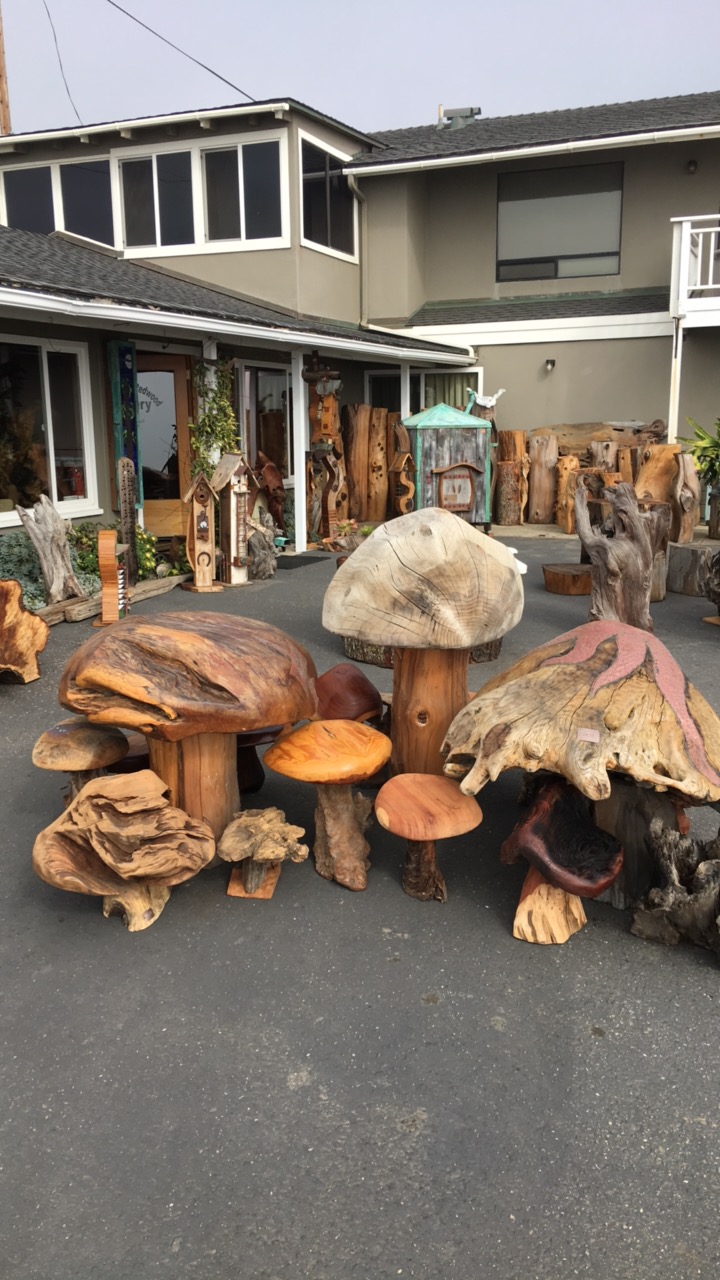


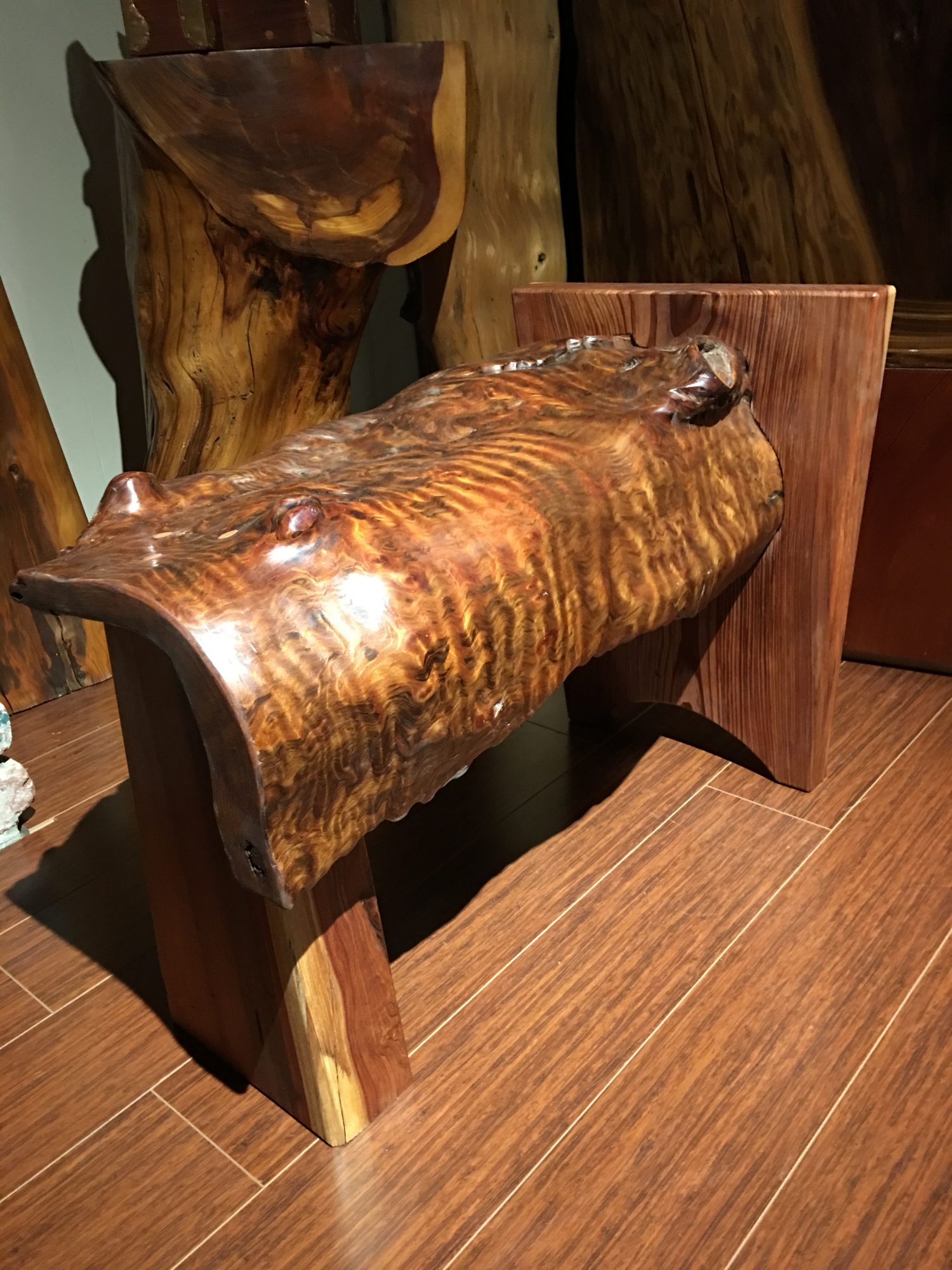
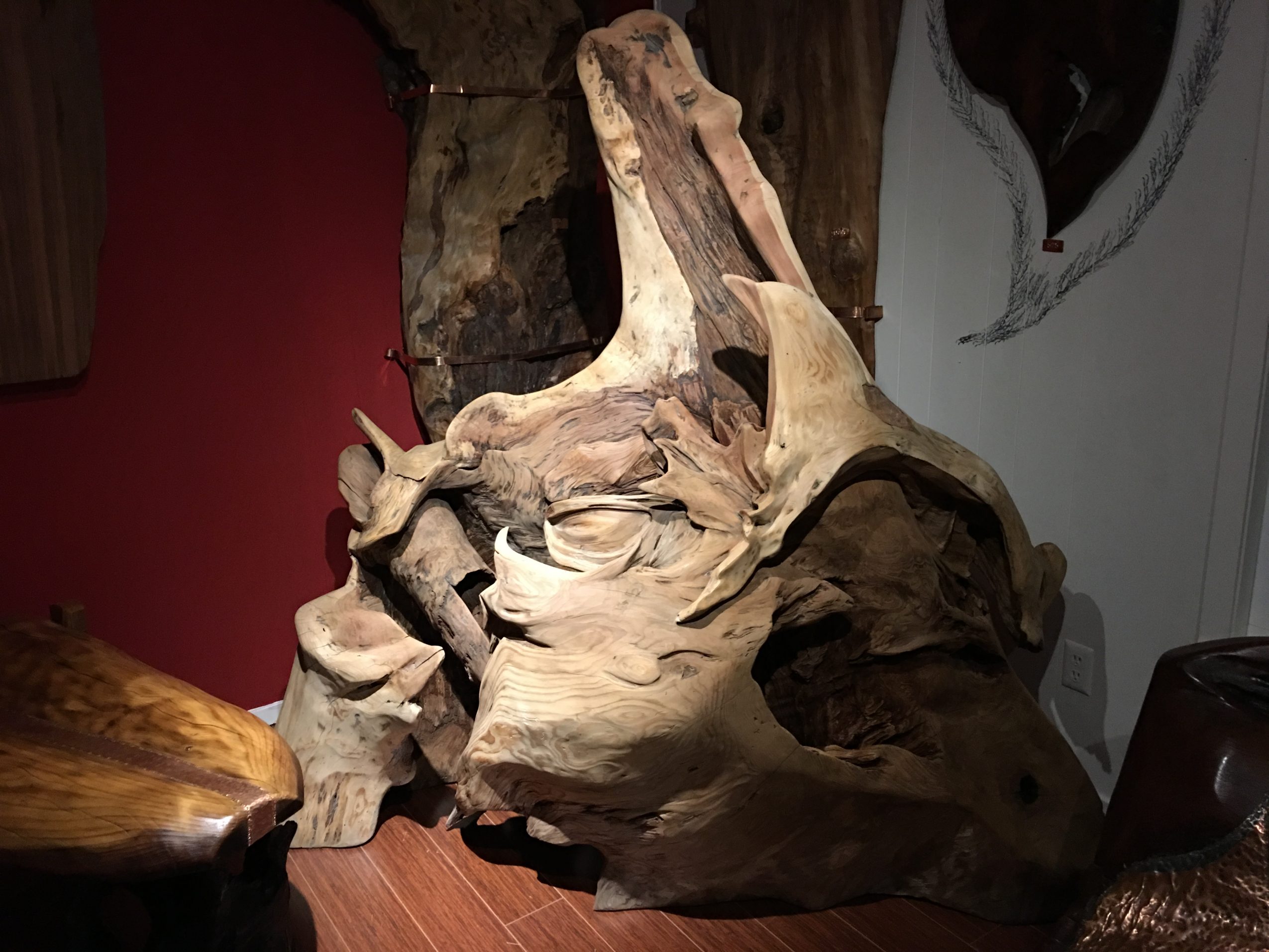


Image Credit:
William Scroggins Creations
Getting in touch: VoyageLA is built on recommendations from the community; it’s how we uncover hidden gems, so if you know someone who deserves recognition please let us know here.



















